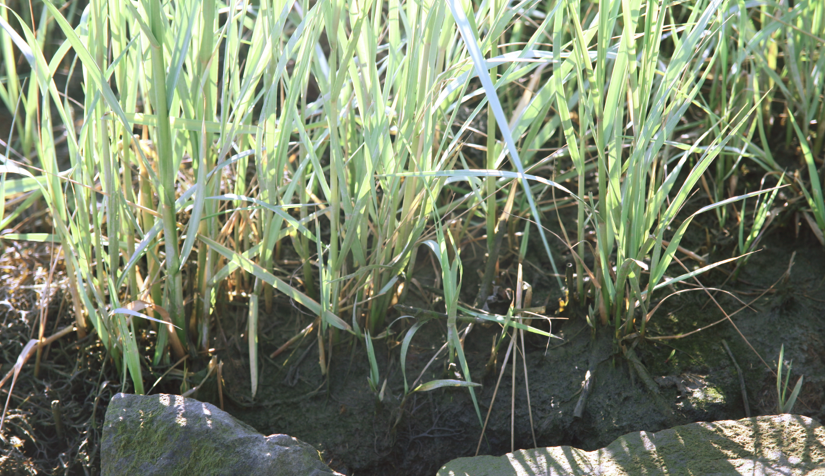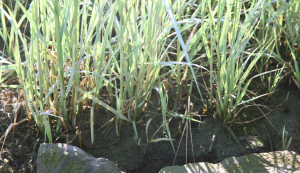Bedtime Stories for the marsh?

 The Three Questions, Leo Tolstoy
The Three Questions, Leo Tolstoy
“The thought came to a certain king that he would never fail if he knew three things. These three things were
- What is the best time to do each thing?
- Who are the most important people to work with?
- What is the most important thing to do at all times?
Many educated men attempted to answer the king’s questions, but they all came up with different answers. The king decided that he needed to ask a wise hermit in a nearby village. The hermit would only see common folk, however, so the king disguised himself as a peasant and left his guards behind to see the hermit. The hermit was digging flower beds when the king arrived. The king asked his questions, but the hermit went on digging rather laboriously. The king offered to dig for him for a while. After digging for some time, the king again asked his questions. Before the hermit could answer, a man emerged from the woods. He was bleeding from a terrible stomach wound. The king tended to him, and they stayed the night in the hermit’s hut. By the next day the wounded man was doing better, but was incredulous at the help he had received. The man confessed that he knew who the king was, and that the king had executed his brother and seized his property. He had come to kill the king, but the guards wounded him in the stomach. The man pledged allegiance to the king, and he went on his way. The king asked the hermit again for his answers, and the hermit responded that he had just had his questions answered.
- The most important time is now. The present is the only time over which we have power.
- The most important person is whoever you are with.
- The most important thing is to do good to the person you are with.”
The Three Questions, John J. Muth
A handsome, provocative allegory poses these queries in more than one way: When is the best time to do things? Who is the most important one? What is the right thing to do? The author’s note at the end clarifies his intent regarding his use of Tolstoy’s idea, explains his decisions about names for his characters, and cites the classic story. An unusual picture story for the families and elementary school-age children responsive to a thoughtful provocation.
Old Turtle, Douglas Wood
“When all of creation–trees, stones, ants, the sky, fish—-begins arguing over who or what God is, quiet Old Turtle is the only one who has the wisdom and ability to see beyond herself to capture the essence. The debate escalates until Old Turtle finally speaks: “STOP!” She accepts and incorporates the beliefs of all the creatures: “God is indeed deep,” she says to the fish in the sea, “and much higher than high,” she tells the mountains. “God is gentle and powerful. Above all things and within all things… God IS.” Old Turtle, after silencing the crowds with her understanding, makes a prediction about the appearance of a new “family of beings” in the world. These beings, human beings, do appear, and soon are fighting among themselves over the nature of God. It is only when people start listening to the mountains and winds and stones and stars that they actually begin to hear–and to heal the earth.”
Grandad’s Prayers of the Earth written by Douglas Wood and illustrated by P.J. Lynch
Picture book about appreciating the natural world, prayer and death published by Candlewick Press
Did You Hear Wind Sing Your Name? An Oneida Song of Spring, Sandra De Couteau Orie
A lyrical poem from Oneida writer Sandra De Coteau Orie celebrates the coming of spring with keen, gentle questions that invite children to observe and appreciate nature’s gifts. “Did you see / the White Birch standing tall among the Darkwoods / and the greening of the Aspen saplings?” Orie, who grew up and still resides in Wisconsin, uses elements of nature significant to her Oneida culture to mark spring’s arrival, explaining their meaning in an author’s note.
“The Butter Battle Book, Dr. Seuss
“The Butter Battle Book is a rhyming story written by Dr. Seuss. It was published by Random House Books for Young Readers on January 12, 1984. It is an anti-war story; specifically, a parable about arms races in general, mutually assured destruction and nuclear weapons in particular. The Butter Battle Book was a New York Times Notable Book of the Year.
This book was written during the Cold War era, and reflects the concerns of the time, especially the perceived possibility that all life on earth could be destroyed in a nuclear war. It can also be seen as a satirical work, with its depiction of a deadly war based on a senseless conflict over something as trivial as a breakfast food. The concept of a war based on toast is similar to the war between Lilliput and Blefuscu in Jonathan Swift‘s Gulliver’s Travels, which was nominally based on the correct end to crack an egg once soft boiled.?
Bag in the Wind written by Ted Kooser and illustrated by Barry Root
Picture book about recycling, reusing resources, social responsibility published byCandlewick Press
A Day in the Salt Marsh, Kevin Kurtz
“Enjoy A Day in the Salt Marsh, one of the most dynamic habitats on earth. Fun-to-read, rhyming verse introduces readers to hourly changes in the marsh as the tide comes and goes. Watch the animals that have adapted to this ever-changing environment as they hunt for food or play in the sun, and learn how the marsh grass survives even though it is covered by salt water twice a day.”
World Without Fish, Mark Kurlansky
“Mark Kurlansky, beloved author of the award-winning bestseller Cod: A Biography of the Fish That Changed the World, offers a riveting new book for kids about what’s happening to fish, the oceans, and our environment, and what, armed with knowledge, kids can do about it.
Written by a master storyteller, World Without Fish connects all the dots—biology, economics, evolution, politics, climate, history, culture, food, and nutrition—in a way that kids can really understand. It describes how the fish we most commonly eat, including tuna, salmon, cod, and swordfish, could disappear within 50 years, and the domino effect it would have—oceans teeming with jellyfish and turning pinkish orange from algal blooms; seabirds disappearing, then reptiles, then mammals. It describes the back-and-forth dynamic of fishermen and scientists. It covers the effects of industrialized fishing, and how bottom-dragging nets are turning the ocean floor into a desert.”
Meadowlands: A Wetlands Survival Story, Thomas Yezersky
“The 20,000 acres of wetlands in New Jersey now known as the Meadowlands were once home to hundreds of species of plants and animals. But in the four hundred years since European explorers first arrived in the Meadowlands, people have dammed up, drained, built over, and polluted this formerly vibrant ecosystem—and all but destroyed it. Still, signs of life remain—under bridges, on the edges of parking lots, and beside train tracks. Slowly but surely, with help from activist groups, government organizations, and ordinary people, the resilient creatures of the Meadowlands are making a comeback, and the wetlands are recovering.”